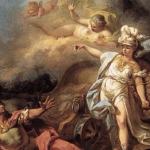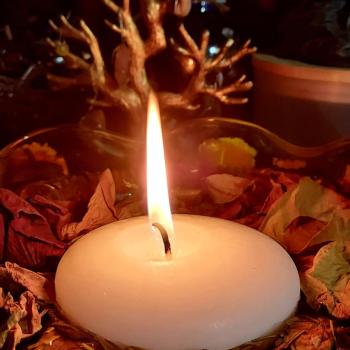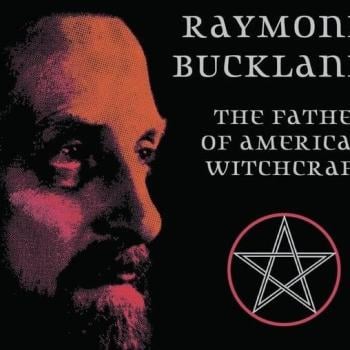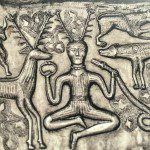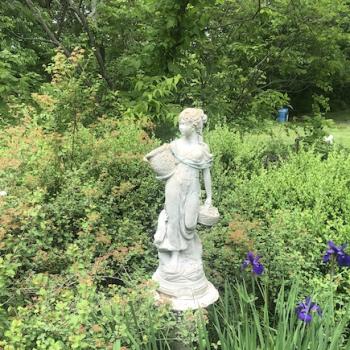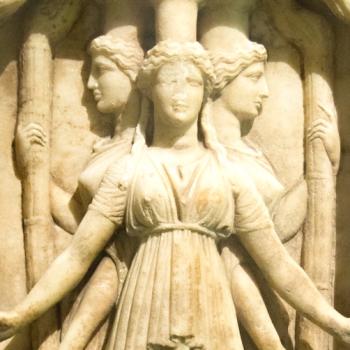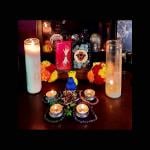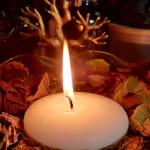THE WITCH-CULT IN WESTERN EUROPE & THE GOD OF THE WITCHES
by Margaret Murray Originally published in 1921 and 1931 respectively
Is it fair to count two books as one, even if they share the same author? Maybe not, but I’m going to anyways because this is my blog and I make the rules. Witch-Cult is by far the more famous book (though far less readable), and probably did more to rehabilitate the word “Witch” than any other book written in English. Murray’s Witches sacrificed babies, held orgies, feasted, danced, and promised their souls to Satan, which doesn’t sound all that positive, but they did so while loving the land, celebrating the earth, and because their religion had been corrupted by persecution from Christians. About the only way I know how to put it is that Murray made her readers possibly want to be Witches, or at least look at them with a more sympathetic eye.
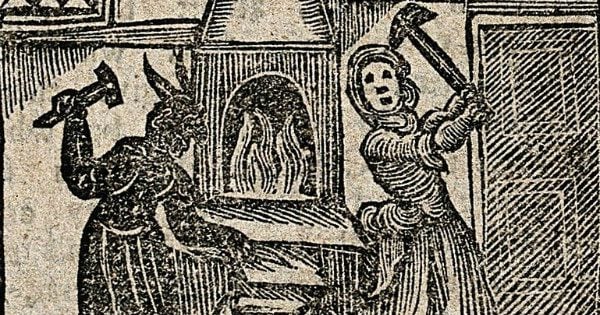
In Witch-Cult Murray gives us the lexicon that many Witches still use today. In her work we find words like esbat, coven, familiar, and almost sabbat (she adds an “h” at the end), and she also provides a rudimentary Wheel of the Year to aspiring Witches:
“.. The chief festivals were: in the spring, May Eve (April 30), called Roodmas or Rood Day in Britain and Walpurgis−Nacht in Germany; in the autumn, November Eve (October 31), called in Britain All hallow Eve. Between these two came: in the winter, Candlemas (February 2); and in the summer, the Gule of August (August 1), called Lammas in Britain. To these were added the festivals of the solstitial invaders, Beltane at midsummer and Yule at midwinter; the movable festival of Easter was also added, but the equinoxes were never observed in Britain.”
She’s got everything in there except for the equinoxes, though she uses Beltane as the name for the Summer Solstice.
Witch-Cult is probably best remembered today for the “Murray Hypothesis,” the idea that Witchcraft was an organized religion that existed side by side and in opposition to Christianity for several centuries until the followers of Jesus had had enough. According to Murray the Witchcraft religion was then driven underground and their Horned God was eventually transformed into the Christian Devil. Scholars have never taken the entire Murray thesis seriously, but that doesn’t make her any less influential. Even without the hypothesis her writings on Witchcraft would have had some sort of impact.
I think The God of the Witches is the superior book among the two. It’s far more readable, and makes Murray’s Witches even more lovable. In that book’s first chapter she basically created the composite Horned God most of us know so well today. In one chapter she weds an ancient cave painting to Cernunnos and Pan, and then to Herne the Hunter and Robin Hood. It’s masterful and will literally have you cheering as you read it (even if it’s not quite the historical truth).
ARADIA: OR THE GOSPEL OF THE WITCHES
by Charles Godfrey Leyland Originally published in 1899.
After many years of not believing so, I now think that Leyland’s Aradia is the most influential book in the development of Modern Witchcraft. I’ve come to this conclusion for a number of reasons, but mainly because Leyland provided a ritual text that could be easily adapted by anyone looking to recreate Witch-ritual, and because many of the ideas expressed in Aradia are still a part of most Witchcraft traditions today.
I’ve written about Aradia before, and much of the book’s historical background was explained in that article. If you are unfamiliar with Aradia and too lazy to click the link provided, I’ll try to sum it up in a sentence or two. Leyland was an American living in Italy who met a young woman named Maddalena who told him she was a Witch in a Witch-group. After many years of asking for information about Witchcraft she allegedly gave him some written materials which he then translated into English and published. We don’t have copies of the original material, but we do have copies of Leyland translating the material from Italian into English, so it seems likely to me they existed in some form.

The Witchcraft written about in Aradia was radically different than what had been written about previously, and even what came later. Most Witches in literature worshipped and honored a male god. For instance The leader of Witch ritual in Margaret Murray’s The Witch-Cult in Western Europe was a figure known as the Grand Magister, who was said to be the living embodiment of The Devil. Aradia had three deities: a goddess (Diana), a god (Lucifer in his bright and shining mode), and their daughter Aradia.
Aradia was more than just a child goddess, she was Diana’s avatar on Earth, come down from on high to teach the Witches of Italy how to protect (and avenge) themselves from the Christians who persecuted them. The magick in Aradia is not all harm none sunshine. One especially powerful passage ends with “until the last of your oppressors shall be dead.” It’s a bit different from what many Witches practice today, but it feels like Witchcraft.
And it feels like Witchcraft because many of the words and ideas found in it would end up in the Modern Craft. Doreen Valiente is generally looked at as the writer of The Charge of the Goddess, but many of the words found in Valiente’s Charge come straight from Aradia (something she would have freely admitted to):
“When I shall have departed from this world, whenever ye have need of anything, once in the month, and when the moon is full, ye shall assemble in some desert place, Or in a forest all together join to adore the potent spirit of your queen, my mother, great Diana. She who fain would learn all sorcery yet has not won its deepest secrets, then my mother will teach her, in truth all things as yet unknown. And ye shall all be freed from slavery, and so ye shall be free in everything; and as the sign that ye are truly free, ye shall be naked in your rites, both men and women also: this shall last until the last of your oppressors shall be dead.”
Though Aradia doesn’t contain a full ceremony that we might call “cakes and ale” wine and baked goods in a ritual setting are seen as important. The second chapter of Aradia is called “The Sabbat: Treguenda or Witch-Meeting–How to Consecrate the Supper” and contains lines such as: “You shall make cakes of meal, wine, salt, and honey in the shape of a (crescent or horned) moon . . .” the supper is later described in a way that certainly sounds like many Witch-covens today:
“And thus shall it be done: all shall sit down to the supper all naked, men and women, and, the feast over, they shall dance, sing, make music, and then love in the darkness, with all the lights extinguished: for it is the Spirit of Diana who extinguishes them, and so they will dance and make music in her praise.”
Chapter Eight of Aradia includes an invocation over wine in a drinking horn, a blessing that would not be out of place in my own circle:
“He who would have a good vintage and fine wine, should take a horn full of wine and with this go into the vineyards or farms wherever vines grow, and then drinking from the horn, say . . . .I drink, and yet it is not wine I drink, I drink the blood of Diana, Since from wine it has changed into her blood, And spread itself through all my growing vines, Whence it will give me good return in wines, Though even if good vintage should be mine . . . .”
The Witches of Aradia don’t cast circles or call quarters, but they do a lot of other things that we’d expect Witches to. The importance and influence of Aradia cannot be overstated.
(A small portion of this article was lifted from Witchcraft before Wicca: Three Important Magical Books. Sorry for the repeat, but I did such a great job of expressing my ideas in that one that I couldn’t help myself. Also I’m sorry for so many paintings of half-naked women, finding interesting images free of copyright concerns can be a challenge.)



